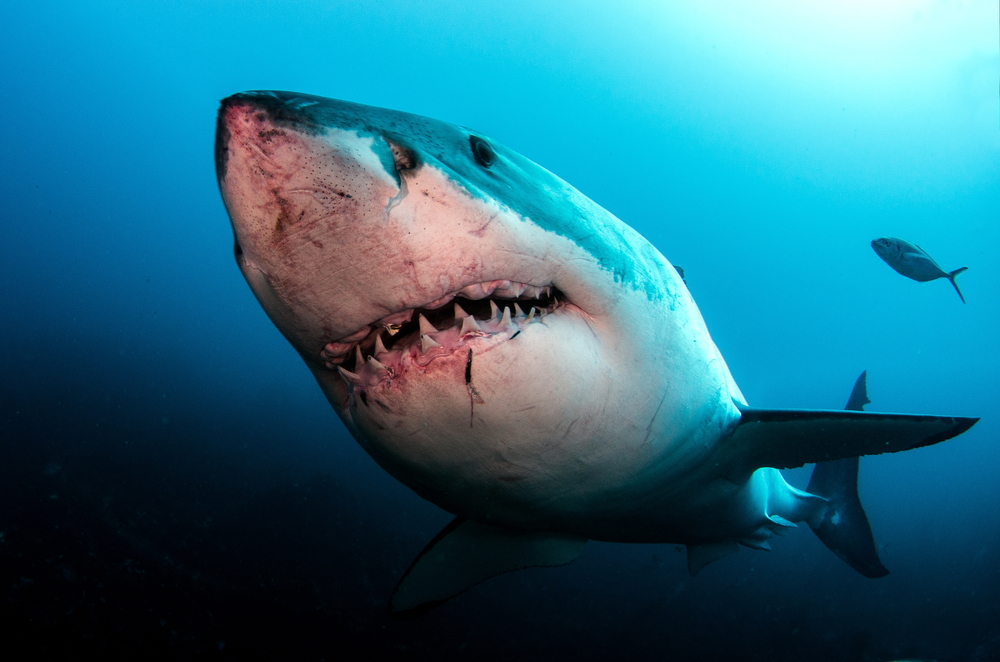
A female scuba diver has been killed in shark attack in Western Australia, the second such fatality on beaches peripheral to Perth during the same week, after a surfer died as a result of having his leg bitten off on Tuesday in an attack in Mandurah, just south of the West Australian capital. The two incidents, plus the death of a protected great white shark after it was trapped following the first attack, have reignited debates about the coexistence of humans and apex ocean predators along Australia’s coastline.
In the earlier attack, 29-year-old Ben Gerring, a big-wave surfer, had paddled out some distance and was waiting for a wave at the popular Gearies break in Falcon Beach, when friends heard him screaming for help. Bravely, several surfers did go to his assistance and they managed to get him back into the beach, where people began administering first aid.
‘It was pretty horrific to see someone you know in that predicament,’ Mandurah Boardriders Club president Brian Williams, told ABC radio. ‘There are images there that are going to be pretty hard to get out of your mind for a while… I’ve spoken to a lot of the guys that are struggling at the moment with the scenes they saw.’
The day after the attack, Western Australia’s fisheries department trapped a 4.2-metre great white shark using baited drum lines dangling close to where Gerring had been surfing. The animal apparently died on the line before staff reached it, and the body was disposed of at sea after measurements had been made. Strangely, however, Fisheries omitted to measure the fish’s jaws, which could have been compared to the bite marks on Gerring’s board to reveal if it had been the culprit.
Great whites are listed as a vulnerable species, and the animal’s death provoked some severe criticism from various quarters, particularly since the shark responsible for the attack could have been many miles distant by the time the trap was laid, and no autopsy was conducted on the body of the one caught.
National shark campaign manager for Sea Shepherd, Natalie Banks, said the action was ‘similar to going to a park 18 hours after there has been a dog bite and just killing a dangerous dog.’ And Lynn MacLaren, the WA Greens MP, told a local radio station that it was usually a requirement ‘to prove that a shark was involved in a particular attack’.
Sadly, despite the heroic efforts of his friends, Gerring died in hospital on Friday. Three days later, on Sunday, the as-yet-unnamed scuba diver was attacked at Mindarie, a popular spot about 35km north of Perth. The woman’s dive partner, who reported feeling something swimming past him just before the attack, tried to pull her from the water, but she died of her injuries at the scene. Three men who were fishing from a 5.5-metre boat nearby came to help, and they reported seeing the shark, which they described as longer than their boat.
It’s hard to visualise something so massive as being vulnerable, particularly since it boasts 300 teeth that it doesn’t even use to chew its food (which is ripped into chunks and then swallowed whole), but great white numbers have been on the decline for decades, which doesn’t upset everyone as much as it perhaps should. As an apex predator, sharks such as the ones responsible for the attacks are incredibly important to the whole ecosystem.
Some experts—such as George Burgess, the director of the Florida Program for Shark Research—have claimed that shark attacks will become ever more common, with more people taking to the waves and shark numbers bouncing back. However, this week’s two tragedies are the first shark-caused fatalities in Australia this year, according to the Taronga Conservation Society’s Australian Shark Attack File, which further reports that two people died from 33 recorded attacks across the country in 2015, with 98 attacks and six deaths worldwide.
